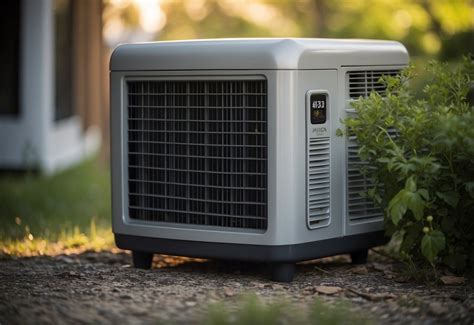The Secret to a Cool Camper: AC Recharge and Maintenance
Summer road trips and camping adventures are all about escaping the everyday grind and embracing the great outdoors. But even the most idyllic campsite can become unbearable if your camper's air conditioning unit is on the fritz. A properly functioning AC system is crucial for comfortable sleeping, cooking, and simply relaxing in your mobile home away from home. This guide delves into the secret to a cool camper: understanding and maintaining your AC recharge system.
Why is my Camper AC Not Working?
Before diving into recharging, it's vital to understand the potential causes of a malfunctioning AC system. A simple lack of coolant is only one possibility. Other issues include:
- Low Refrigerant: This is the most common reason for poor cooling performance. Refrigerant leaks are gradual and often go unnoticed until the system's efficiency significantly drops.
- Dirty Air Filter: A clogged air filter restricts airflow, hindering the AC's ability to cool effectively. Regular cleaning or replacement is crucial.
- Frozen Evaporator Coil: This can occur due to low refrigerant, airflow restrictions, or a faulty blower motor. A frozen coil prevents proper cooling.
- Faulty Compressor: The compressor is the heart of the AC system. If it fails, the entire system will likely stop working.
- Electrical Problems: Issues with wiring, the capacitor, or the control panel can prevent the system from functioning correctly.
How Often Should I Recharge My Camper AC?
There's no set schedule for AC recharges. Unlike a car, where you might change the oil every 3,000 miles, your camper's AC recharge needs depend on several factors:
- Leakage: The presence of leaks significantly impacts how often you'll need a recharge. Small leaks may require topping up annually, while larger leaks might necessitate more frequent attention.
- Usage: The more you use your camper's AC, the more strain you place on the system, potentially leading to faster refrigerant depletion.
- Age of the System: Older systems are more prone to leaks and require more frequent maintenance.
Instead of focusing on a strict timetable, prioritize regular inspections and maintenance. If you notice a significant drop in cooling capacity, it's time to investigate.
Can I Recharge My Camper AC Myself?
While some basic maintenance like filter cleaning is DIY-friendly, recharging your camper's AC is generally best left to professionals. Refrigerant handling requires specialized equipment and knowledge to avoid safety hazards and environmental damage. Improper handling can lead to:
- Personal Injury: Refrigerants can be toxic if inhaled or mishandled.
- Environmental Damage: Releasing refrigerant into the atmosphere contributes to environmental problems.
- System Damage: Incorrect recharging techniques can damage your AC system, leading to costly repairs.
It's crucial to find a reputable RV repair shop or mobile technician with experience in AC systems. They possess the necessary tools, expertise, and proper disposal methods.
What is the Cost of an AC Recharge for a Camper?
The cost of an AC recharge varies depending on several factors:
- Location: Labor costs differ regionally.
- Refrigerant Type: The type of refrigerant used in your system impacts the cost.
- Extent of Repairs: If leaks are found, repairs will add to the overall cost.
Expect to pay anywhere from $100 to $500 or more for a complete service, including leak detection and refrigerant recharge.
How Can I Prevent Future AC Problems?
Proactive maintenance is key to keeping your camper cool and comfortable. Here are some preventative measures:
- Regular Filter Changes: Change or clean your air filter every few months, or more frequently if you use the AC extensively.
- Annual Inspections: Schedule an annual inspection with a qualified technician to check for leaks and other potential problems.
- Protect the Unit: Shield the AC unit from debris and damage during transit or storage.
- Proper Ventilation: Ensure proper airflow around the unit to prevent overheating.
By following these tips, you'll significantly extend the lifespan of your camper's AC system, ensuring many years of cool comfort on the road.
What type of refrigerant does my camper AC use?
The type of refrigerant used in your camper's AC system will depend on the age of the unit and the manufacturer's specifications. Older systems might use R-22, while newer models typically utilize R-134a or other environmentally friendly alternatives. Checking your owner's manual is the best way to determine the specific refrigerant used in your camper. A qualified technician will also be able to identify the correct refrigerant during a service visit.
How do I know if I have a refrigerant leak?
Detecting a refrigerant leak can be tricky. Some common indicators include:
- Reduced Cooling Capacity: The most obvious sign is a noticeable drop in the cooling efficiency of your AC system.
- Frozen Evaporator Coil: Ice buildup on the evaporator coil often indicates low refrigerant levels.
- Unusual Noises: Hissing or bubbling sounds from the AC unit might suggest a refrigerant leak.
- Visible Leaks: In some cases, you might see visible refrigerant escaping from the system's lines or connections. However, this is less common as leaks are often very small.
If you suspect a leak, immediately contact a qualified RV technician for professional diagnosis and repair. Attempting to locate and repair a refrigerant leak yourself is unsafe and could cause further damage.
By understanding the basics of camper AC recharge and maintenance, you'll ensure comfortable temperatures on all your adventures. Remember, while some aspects are DIY-friendly, professional assistance is crucial for refrigerant handling and major repairs. Investing in preventative maintenance will save you money and frustration in the long run, keeping your camper cool and comfortable for years to come.

